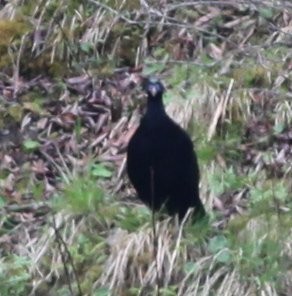Chinese Monal
A species of Monals Scientific name : Lophophorus lhuysii Genus : Monals
Chinese Monal, A species of Monals
Botanical name: Lophophorus lhuysii
Genus: Monals
Content
Description General Info
 Photo By ed_shaw , used under CC-BY-NC-4.0 /Cropped and compressed from original
Photo By ed_shaw , used under CC-BY-NC-4.0 /Cropped and compressed from original Description
The Chinese monal or Chinese impeyan (Lophophorus lhuysii) is a pheasant. This monal is restricted to mountains of central China. The plumage is highly iridescent. The male has a large drooping purple crest, a metallic green head, blue bare skin around the eyes, a reddish gold mantle, bluish green feathers and black underparts. The female is dark brown with white on its throat. This is the largest of the three monals and, by mass, is one of the largest pheasants (after the turkeys and the green and Indian peafowls). Males measure 76–80 cm (30–31 in) in length while females measure 72–75 cm (28–30 in). The mean weight is reportedly 3.18 kg (7.0 lb). The scientific name, lhuysii, commemorates the French statesman Édouard Drouyn de Lhuys. Due to ongoing habitat loss and degradation, limited range and illegal hunting, the Chinese monal is evaluated as vulnerable on IUCN Red List of Threatened Species. It is listed on Appendix I of CITES. 
Size
72 - 80 cm
Nest Placement
Ground
Feeding Habits
Chinese Monal primarily feeds on roots, bulbs, leaves, and flowers of plants such as Anemone rivularis and Primula. It occasionally consumes insects, seeds, and mosses, especially in winter. Chinese Monal is known to forage in small groups, reflecting a varied diet and social feeding behavior.
Habitat
The habitat of chinese Monal encompasses subalpine and alpine meadows interspersed with bare rock outcrops. These birds are typically associated with regions typified by coniferous and rhododendron forests. These environments are characteristic of the broader high mountainous regions where chinese Monal is adapted to thrive.
Dite type
Herbivorous